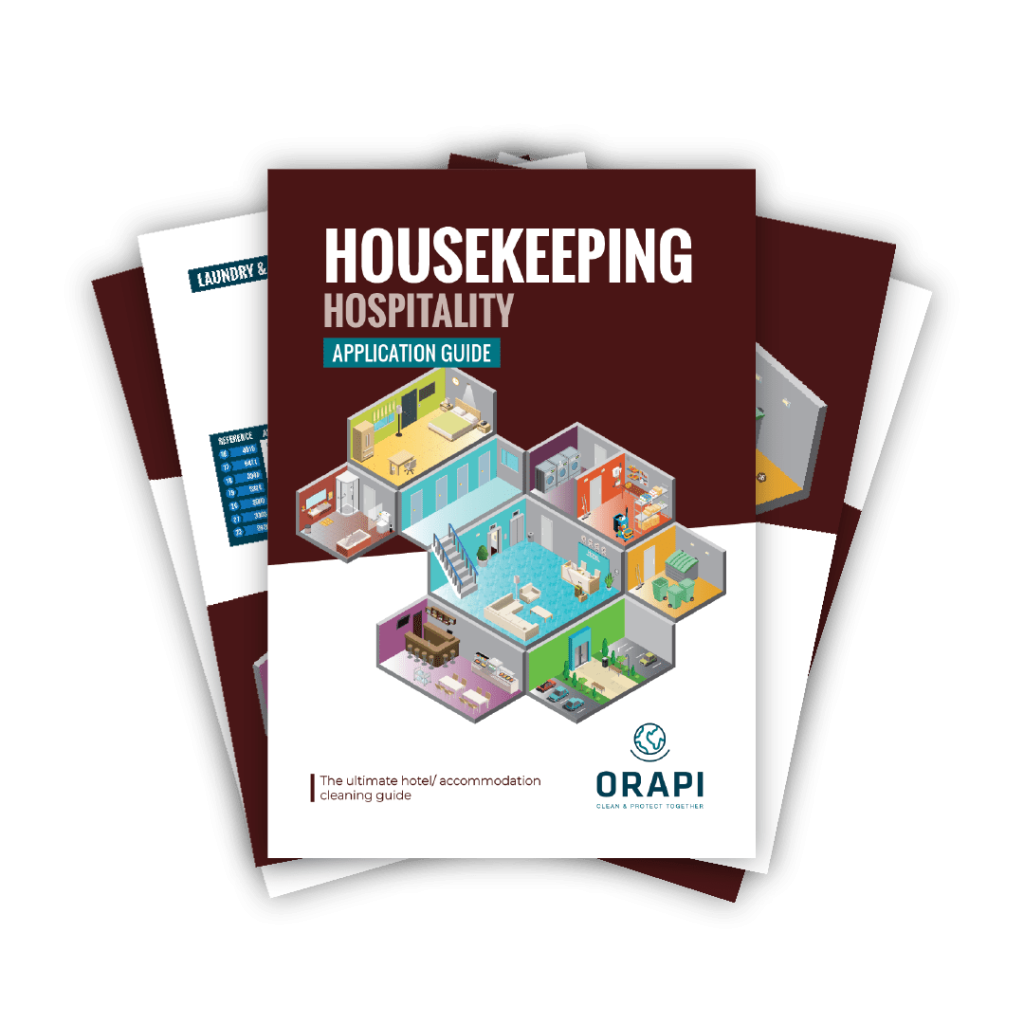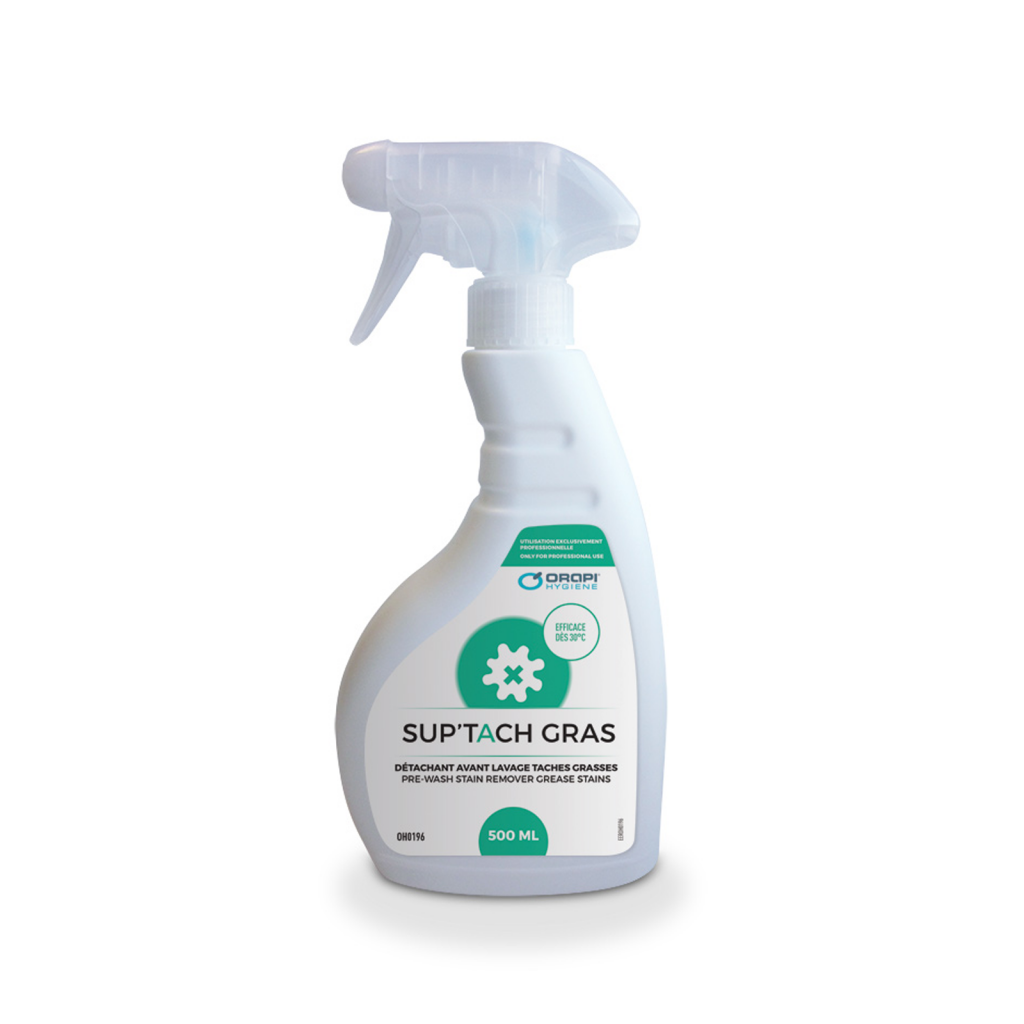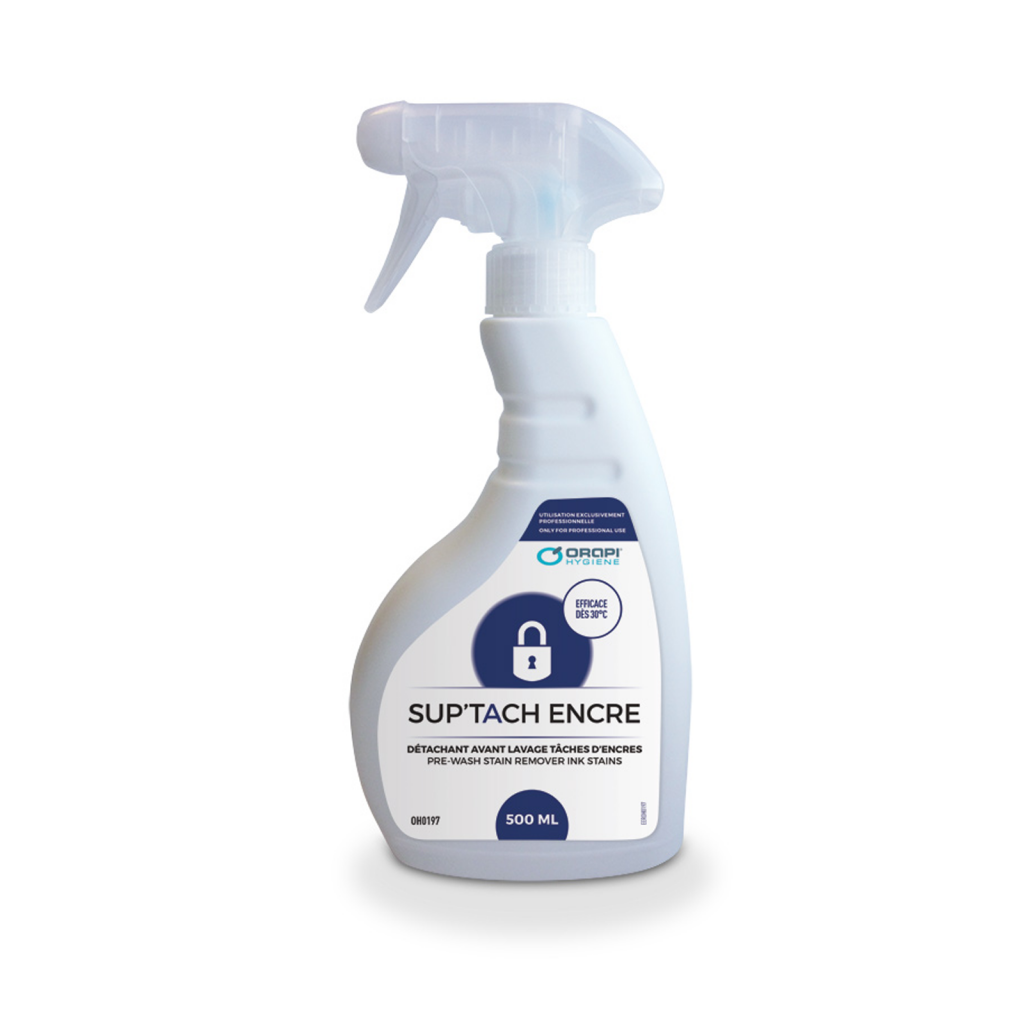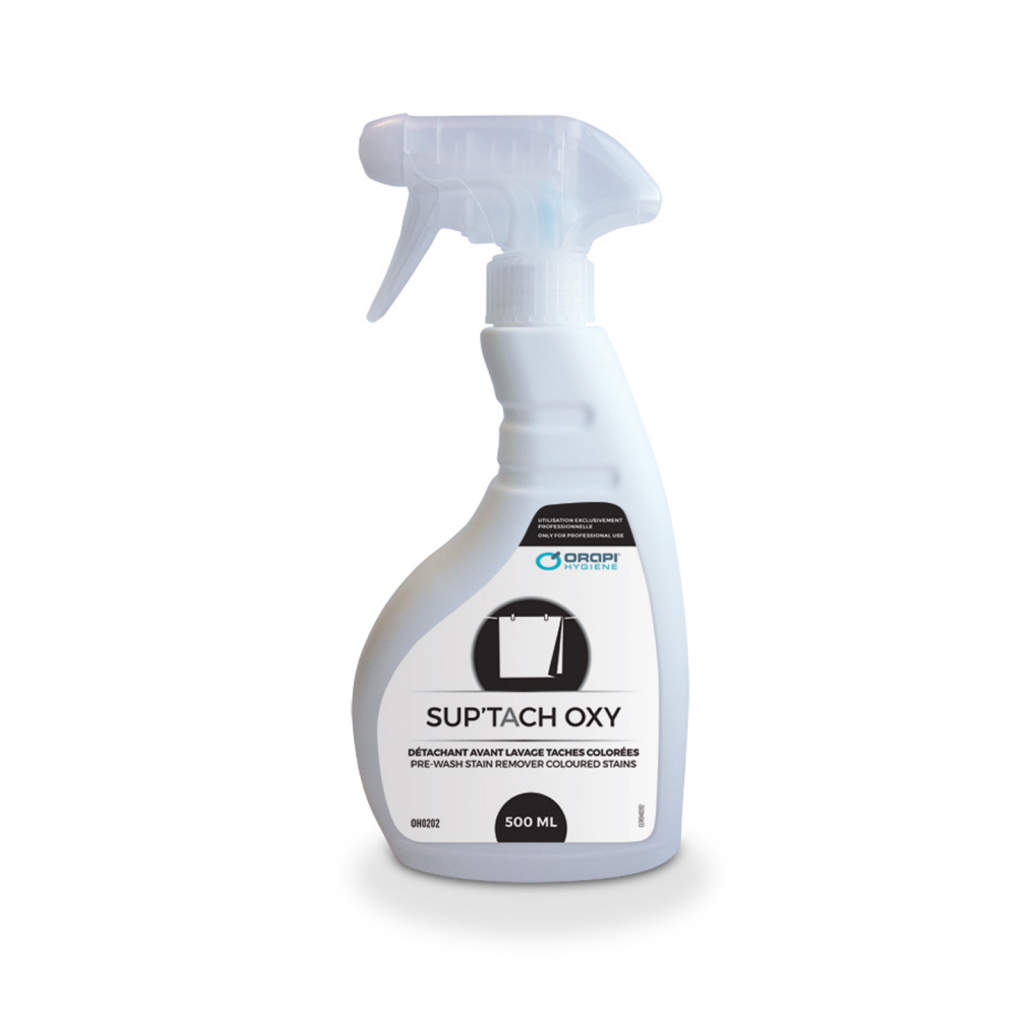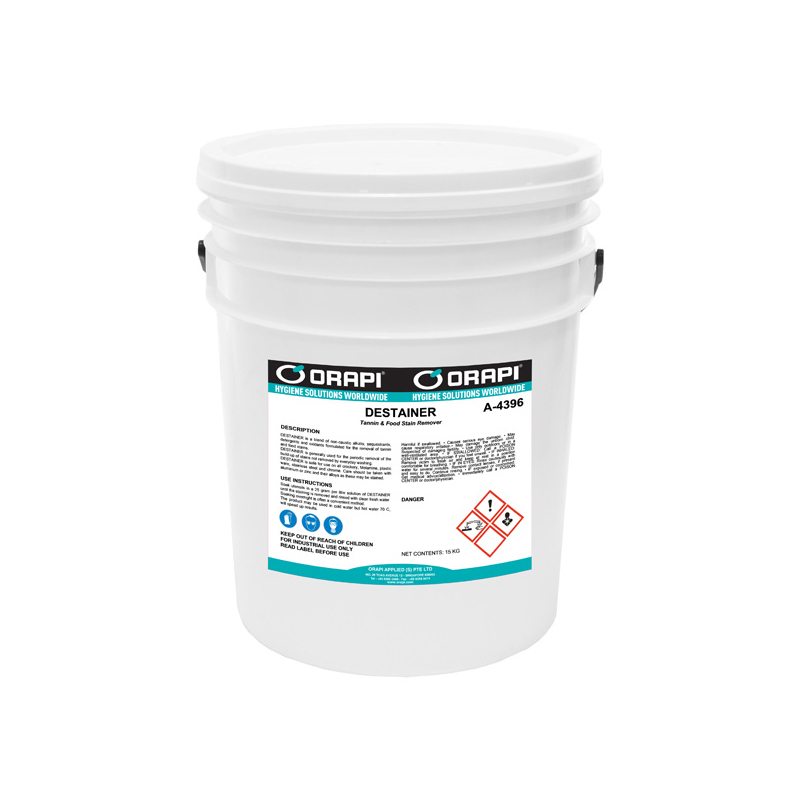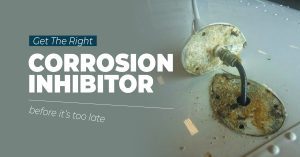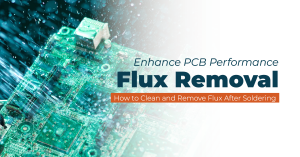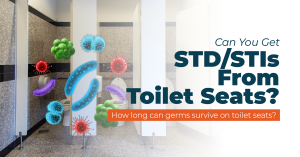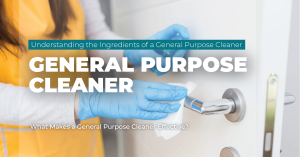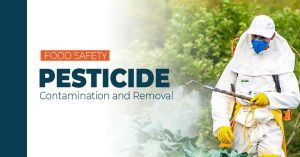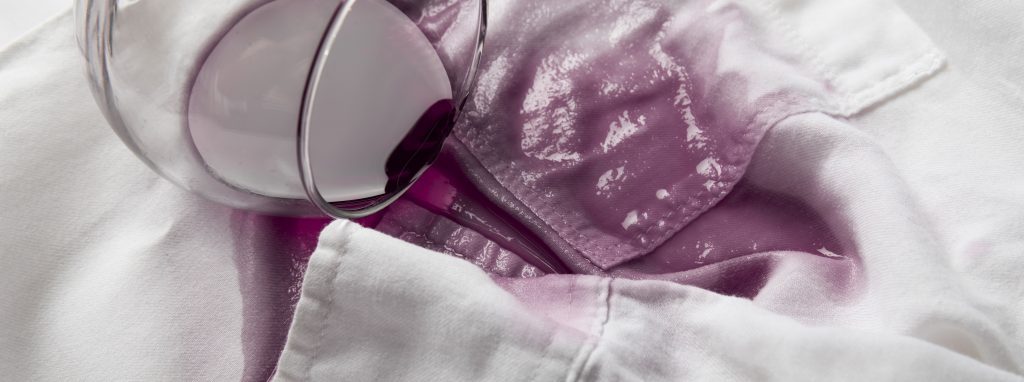
Spot cleaning is the targeted treatment of specific stains or soiled areas on an item, bypassing the need for a complete wash cycle. Depending on the stain’s severity, this process may require minimal or more comprehensive treatment using cleaning products. It proves especially beneficial in situations where a complete wash isn’t practical or needed. The advantage of spot cleaning lies in its ability to swiftly tackle stains or soiled areas on clothing, upholstery, or other items without necessitating the cleaning of the entire item. Whether dealing with a clothing spill, upholstery stain, or carpet mud, spot cleaning directly addresses the problem area without the inconvenience of washing the entire item. In this article, we tell you how to remove different types of spots and stains from difficult-to-wash surfaces.
Fresh Spots on Clothing
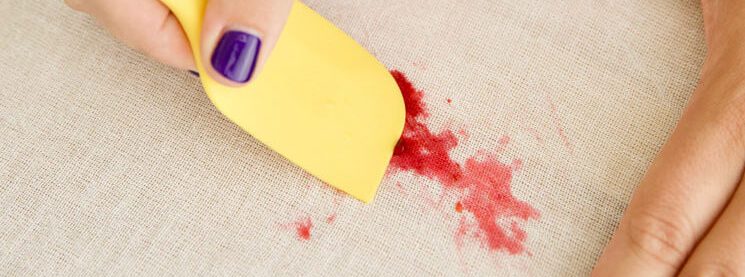
For optimal stain removal on clothing and delicate items, gently scrap any visible excess residue using a credit card, butter knife, or spoon. Avoid vigorous rubbing, which may embed the stain deeper into the fabric.
When dealing with liquid stains, gently blot the affected area with a clean white cloth or paper towel. Ensure you use a fresh section of the cloth each time to prevent spreading the stain further.
It’s crucial to use cold water during the stain removal process. Warm or hot water can exacerbate the stain, causing it to set into the fabric and become more challenging to remove.
@orapi_recommends How To Blot Stain Effectively Like A Professional #cleantok#stainremoval #cleaningtips @shah_the_professional ♬ original sound - ORAPI Recommends
After blotting:
- Use a separate clean white cloth or paper towel to absorb the stain, along with any recommended cleaning solution.
- Blot from the inside to avoid spreading the stain to other parts of the garment.
- Continue blotting in a different clean area of the cloth until the stain disappears completely.
Remember, spot cleaning is a temporary fix. To thoroughly clean the garment, follow the care label instructions for washing or consider professional dry cleaning. This ensures a comprehensive cleaning that removes any lingering traces of the stain.
Furniture and Larger Items

Spot Cleaning: Specific Spots and Stains
Oil Stains

Stubborn oil stains from butter, oil, chocolate, makeup, and similar substances pose challenges due to their greasy, complex molecules deeply embedded in fabric fibres. These stains resist standard cleaning methods as they tightly bond with the fabric, especially butter and oil-based stains, while dyes and oils in chocolate and makeup penetrate deeply, causing discolouration. Temperature-sensitive fabrics worsen the issue if improperly treated, setting stains further. Inadequate or delayed stain removal techniques in busy environments contribute to their persistence, making complete removal more difficult.
ORAPI RECOMMENDS:
A ready to use pre-spotting agent formulated for the removal of stubborn oil stains, SUP’STAIN OI is particularly effective on butter, oil, chocolate, makeup and other stains.
Ink Stains

Stubborn ink stains in hotels and restaurants stem from accidental spills or mishandling of pens, markers, or printer ink. With its pigments and dyes, Ink quickly penetrates porous surfaces like carpets, upholstery, or tablecloths, making removal challenging. Its rapid absorption into fibres and materials causes it to set swiftly, becoming highly resistant to standard cleaning methods. Improper or delayed treatment may worsen the stain, making it deeply embedded and necessitating specialised cleaning agents or professional help to eliminate it without surface damage.
ORAPI RECOMMENDS:
A ready to use pre-spotting agent formulated for the removal of ink based stains, SUP’STAIN INK is particularly effective for the removal of ink and paint stains in commercial or on premise laundries.
Coloured Stains
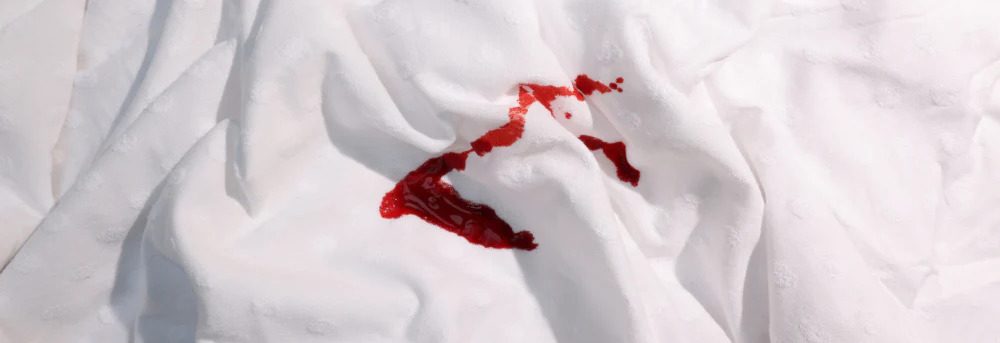
Stubborn-coloured stains such as blood, red fruit, wine, grass, or urine stains in commercial or on-premise laundries often pose difficulty in removal due to their chemical composition and the nature of their interaction with fabric fibres. Blood contains haemoglobin, a protein that binds strongly to fabric and sets when exposed to heat, making it resistant to traditional washing methods. Red fruit, wine, and grass stains contain pigments and tannins that embed into fibres, creating a durable bond. Urine stains, particularly from pets, contain uric acid and other compounds that bond tightly with fabric. Delays in treating or improper initial treatment can further set these stains, making them more challenging to eliminate during regular laundering processes.
ORAPI RECOMMENDS:
A ready to use pre-spotting agent developed for the removal of coloured stains, and formulated with enzymes to respect linen fibres, SUP’STAIN OXY+ is particularly effective for the removal of blood, red fruit, wine, grass or urine stains in commercial or on premise laundries
Rust Stains

Stubborn stains from metallic origin in commercial or on-premise laundries are often challenging to remove due to the oxidative reactions that occur between metal ions and fabric fibres. These stains typically result from contact with rusty water, metal zippers, or buttons, forming insoluble metal oxides on the fabric. The oxides tightly adhere to the fibres, creating a durable bond that resists traditional laundry detergents and conventional washing methods. The resilient nature of these metallic compounds makes them resistant to standard stain removal processes, requiring specialised cleaning agents or treatments to break down the metal oxides and effectively eliminate the stains.
ORAPI RECOMMENDS:
SUP’STAIN RUST is a ready-to-use pre-spotting agent formulated to remove rust stains. SUP’STAIN RUST is particularly effective in removing all stains of metallic origin in commercial or on-premise laundries.
Removing Oil, Ink, Coloured, and Rust Spots

To effectively remove oil stains from butter, chocolate, or makeup, ink stains, and coloured To effectively remove oil stains from butter, chocolate, or makeup, ink stains, and coloured stains from blood, red fruit, wine, grass, or urine using a spotting agent. Begin by conducting a preliminary test on an inconspicuous area. Once confirmed safe, spray the stain remover directly onto the stain, allowing it to sit for a few minutes. Then, wash the fabric normally, following care instructions. Check the stain post-wash and repeat the process if needed. Ensure the stain is completely gone before drying. Always adhere to the product instructions and fabric care guidelines for optimal results and to prevent damage.
ORAPI RECOMMENDS:
SUP’STAIN OXY+ is a ready-to-use pre-spotting agent developed for the removal of coloured stains. It is formulated with enzymes to respect linen fibres.
Carpet Stains

Water stains and oil stains on carpets require different products for removal because they are fundamentally different substances with distinct properties and behaviours. The key difference between water-based and oil-based stains lies in their nature—water-based stains dissolve in water, while oil-based stains do not. Using an incorrect cleaner may not effectively remove the stain and could potentially exacerbate the issue by spreading it or causing it to penetrate deeper into the carpet fibres, especially considering the carpets’ thickness. When stains set deeply into the dense layers of a carpet, they become more challenging to clean as the cleaning agent may struggle to reach the deepest parts of the fibres. Hence, using appropriate products tailored for each type of stain is crucial for a higher likelihood of successful removal without damaging the carpet, especially when dealing with deeply embedded stains within the thick carpet layers.
If you want to learn not only how to remove stains from carpets but also how to give them a thorough clean, make sure to read the article ‘5 Detailed Steps to Clean Your Carpet the Right Way–Do You Need A Carpet Cleaner?‘ a read. This source also links the best products for removing water and oil stains from carpets.
Tannin Stains

Stubborn tannin and food stains are often challenging to remove due to the complex nature of the substances involved. Tannins are naturally occurring compounds in plants, mainly fruits, vegetables, and beverages like wine and tea. These compounds can bind strongly to surfaces, creating resilient stains. Certain foods, especially those rich in pigments, oils, or proteins, can also leave persistent stains on surfaces. The difficulty in removing these stains lies in their ability to penetrate porous materials and form chemical bonds with the surface, making them resistant to conventional cleaning methods. The molecular structures of tannins and food components contribute to their tenacity, necessitating specialised stain-removal techniques or products to break these strong bonds and lift the stubborn stains.
Removing Tannin Stains
To remove tannin and food stains, prepare a solution by mixing 25 grams of destaining product per litre of water. Immerse the stained utensils in the solution and let them soak, preferably overnight, for convenience. Using hot water at 70°C will expedite the stain-removal process. Monitor the utensils periodically during soaking, and once stains are visibly reduced or removed, thoroughly rinse the items with clean water.
ORAPI RECOMMENDS:
DESTAINER is a non-caustic blend of alkalis, sequestrants, detergents, and oxidants designed to eliminate tannin and food stains. Ideal for periodic removal of stubborn stains not eliminated during regular washing, it is safe for use on crockery, Melamine, plastic ware, stainless steel, and chrome. Exercise caution with aluminium, zinc, and their alloys, as staining may occur.
Sunscreen Stains
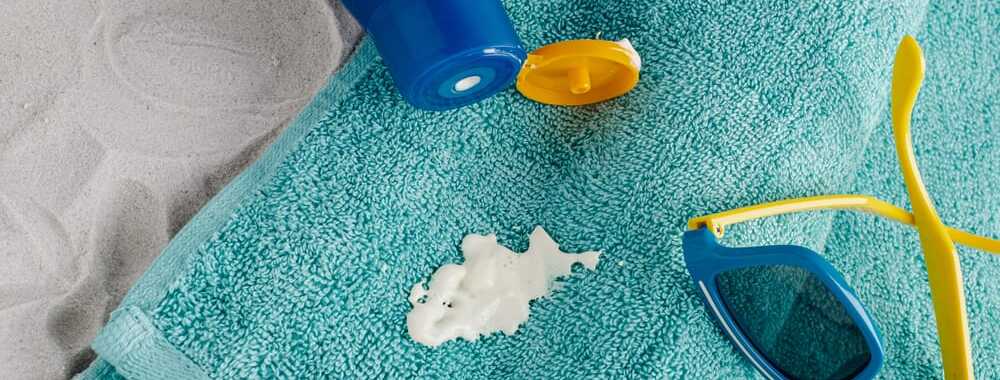
Sunscreen stains on towels and linen pose a major problem for hotels primarily due to the chemical composition of popular sunscreen ingredients, such as Avobenzone. Avobenzone, a chemical UV blocker, absorbs and breaks down UVA rays but becomes problematic when it interacts with the heavy metals and minerals in water. This interaction results in the formation of pigmented complexes, leading to stubborn yellow and pink stains on linen. The challenge in removing these stains is compounded by the increasing popularity of sunscreens with higher sun protection factors (SPF), which often contain elevated concentrations of Avobenzone. As the public becomes more aware of the harmful effects of sun exposure, there is a growing emphasis on regular sunscreen application, further contributing to the prevalence of these stains. Additionally, incorporating oilier creams and oils in advanced sunscreen formulations adds complexity to the removal process, making it a significant concern for hotels striving to maintain the quality and cleanliness of their linens and towels.
Read the article ‘How to Remove Sunscreen Stains (Avobenzone)‘ for more in-depth knowledge on the topic as well as removal tips.
Spot Stain Cleaning Techniques
Step 1
Scrape off excess residue gently with a spoon or something that will hold the excess residue without spreading to other parts of the .
Step 2
Blot the stain with cold water using a clean white towel. Blotting is the act of dabbing the cloth to absorb liquid from fabric by pressing straight down. Avoid rubbing!
Step 3
Spray spotting agent and allow it to sit for a few minutes.
Step 4
Blot using clean, dry white paper towel until the stain disappears. Spray the spotting agent if needed and repeat the same process.
Conclusion: Spot Cleaning
In conclusion, spot cleaning is a valuable solution for swiftly addressing stains or soiled areas on various items, from clothing and upholstery to carpets and larger surfaces. The article provides comprehensive guidance on tackling different types of stains, emphasising the importance of targeted treatment. From fresh spots on clothing to challenging stains like oil, ink, coloured, rust, tannin, and sunscreen stains, the article offers practical advice and recommends specialised products for effective removal. While spot cleaning is a temporary fix, it highlights the necessity of following care label instructions for thorough cleaning or considering professional services. By understanding the unique challenges posed by various stains, readers are equipped with valuable insights to maintain the cleanliness and longevity of their belongings.
